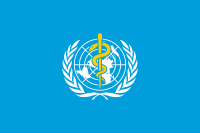
Photo from wikipedia
Background: There is a need to familiarize medical students with the specifics of video consultations. This paper presents the concept and tests of a digitally synchronous distance seminar in which… Click to show full abstract
Background: There is a need to familiarize medical students with the specifics of video consultations. This paper presents the concept and tests of a digitally synchronous distance seminar in which medical students practice video consultations as an aid to a family physician’s activity in a patient-oriented manner. The aim of the evaluation was to analyze the strengths, weaknesses, opportunities, and threats (S.W.O.T.) of the teaching concept. Methods: A total of 12 students carried out video consultations independently and under medical supervision. The seminar included two elements: (A) All students and teachers were video consulted in a family practice; (B) A small group performed a video consultation in a patient´s home environment. The students’ evaluation was conducted with two questionnaires (pre/post), which were analyzed with descriptive statistics and qualitative content analysis. The S.W.O.T. analysis was elaborated by the author team based on the results of the questionnaires and the interviews with the teachers. Results: Students learned the limits and possibilities of teleconsultations and deepened their family medical knowledge. Strengths: Among others; increase interest in video consultations, patient contact, focused work. Weaknesses: Among others; technical difficulties and the time it requires. Opportunities: Among others; involve students with multiple workloads in patient teaching. Risks: Among others; no integration into the curriculum yet, few personnel resources. Conclusions: The learning model familiarizes medical students with competences in family medical patient care using video communication. The results of S.W.O.T. analyses can be weighted differently. Project groups can decide individually if they want to integrate the learning concept into their curriculum and which further improvements are necessary.
Journal Title: International Journal of Environmental Research and Public Health
Year Published: 2022
Link to full text (if available)
Share on Social Media: Sign Up to like & get
recommendations!